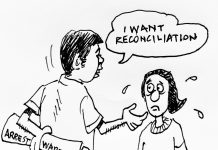
The richness of Philippine culture and history is evidenced by its heritage, which can be seen partly in the way places are named. How were some Philippine places given ancient names? Let us try to revisit them.
One of the ways places in the Philippines were given ancient names was through mythology. Ancient stories and legends played a vital role in the way names of places were created. An example of this is the myth of Maria Makiling. Mount Makiling was named after her, and it is believed that she is the guardian of the forest that can be found on the mountain. Her story has been passed down from generation to generation, and her name continues to live on. An equivalent of this goddess in our region is Carolina, who accordingly resides in Samar island.
Historical events likewise provided certain places with ancient names. The Philippines has been under the rule of different foreign powers, each one leaving their mark on the country. The Spaniards were one of the most influential powers in the Philippines, and they named several places after saints and religious figures. An example of this is San Miguel, Manila, named after the Archangel Michael.
The natural landscape of the Philippines also played a vital role in the way places were named. The country’s geography is diverse, and its environment ranges from dense forests to sandy beaches. People used the characteristics of the environment to create ancient names for places. An example of this is the island of Palawan, which got its name from the world Pulauan, which means “Land of the Beautiful Safe Harbor” in Ancient Chinese.
Culture and traditions also played a significant role in creating ancient place names in the Philippines. The Tagalog language has a complex set of prefixes and suffixes that people used to create names of places. An example is the prefix “Bat-“ which means “rocky outcrop.” You can find this prefix in several places in the Philippines, such as Batangas or Batanes.
Ancient names of places in the country were further given according to the way people lived. The Philippines has a rich history of seafaring culture, and several places got their names from the sea. An example is the province of Pampanga, which got its name from the Tagalog word “Pampan-go,” which means “going to the river.” Some places moreover were named after their chieftains, especially in the Waray region. If the leader’s name was Kabato, the place became known as Kankabato; Haro, Kanharo; Tikum, Kantikum, etc.
The ancient names of places in the Philippines are a testament to its rich history and culture, then. They tell stories of legends, natural occurrences, and historical events. Filipinos have a deep-rooted attachment to their heritage, and they take pride in preserving their traditions. From mythology to topography, every aspect of Philippine culture is represented in the way places are named.



